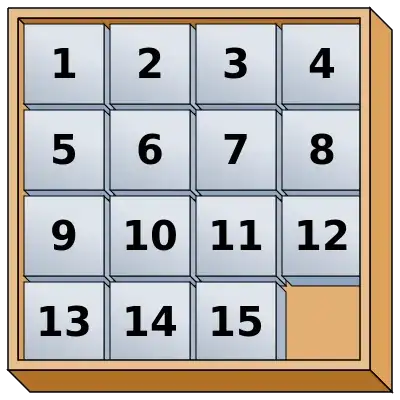Given any current position of the sliding puzzle, a unique permutation in $S_{16}$ corresponding to this position is obtained by considering where exactly each of the 16 numbers is currently located (the 16th number represents of course the empty square). For example, the single move that brings 12 to the lower-right corner and that pushes the empty square one up yields the position (or permutation) $(12,16)$ since location 12 is mapped to square 16, and location 16 is mapped to square 12. The desired permutation (the final desired position) is the identity permutation.
Assuming we start off with the empty square in the lower-right corner, the objective of the puzzle is to bring the given permutation into the identity permutation using an even number of moves - even because in the final position the empty square will again have to be in the lower-right corner, and this means the empty square must have travelled an even number of moves (the 4x4 grid graph is bipartite, so for the empty square to have returned back to the initial partition in this bipartite graph requires it to have travelled an even number of edges). Every move is a transposition, such as the transposition $(12,16)$ above. A permutation can be expressed as a product of either an even number of transpositions or an odd number of transpositions, but not both. Thus, if the initial given position is such that it corresponds an odd permutation, then the puzzle is impossible to solve. (The converse also happens to be true - every even permutation is solvable.)
